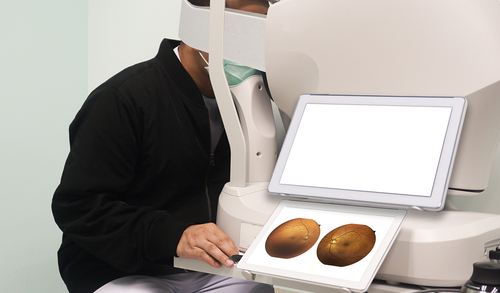
According to experts, routine eye exams are vital to maintaining eye health. By maintaining at least an annual eye exam with your eye doctor, we will be able to know when something new or out of the ordinary develops. Sometimes, people with underlying health and eye conditions may require more frequent exams.
According to studies, many conditions that develop silently show symptoms in the eyes first. Some of these conditions will usually not present symptoms until they are much more advanced. It is because of this that regular eye exams are essential. One condition that most definitely requires regular eye exams is diabetes. Eye doctors can detect and help you manage it from the onset.
Why a Diabetic Eye Exam?
If you have received the tough news that you have diabetes, annual eye exams are critical to your disease management. They will help you track any adverse issues that may develop. It is also best to protect your eyesight from threatening eye conditions.
Diabetes affects the body’s ability to store and use sugar. Because of this feature of the condition, your blood may accumulate excessive sugar. Excessive sugar in the bloodstream usually damages the smaller blood vessels in your body, especially your eyes. The damage can lead to severe eye conditions like diabetic retinopathy and diabetic macular edema.
Diabetic Retinopathy
As mentioned above, high blood sugar damages tiny blood vessels, especially in the eyes. When this happens, they leak fluids into the retina, the photosensitive part of the eye. If not treated early, this leads to vision loss.
Diabetic Macular Edema
Also known as DME, this condition is usually a different form of diabetic retinopathy. In this condition, the center of the retina responsible for central vision, the macula, begins to swell. After swelling, it begins to damage the blood vessels close to it and causes them to leak. If untreated, it also leads to vision loss.
Diabetic Eye Exam vs. Regular Eye Exam
The two are similar because they deal with many similar issues. However, because diabetes affects specific structures in the eye, a diabetic eye exam will entail particular tests targeted to those structures. The eye doctor will spend more time observing the state of your internal blood vessels and the health of your retina.
Here are some of the tests they must include in a diabetic eye exam:
Pupil Dilation
Your eye doctor must perform this pupil dilation test when seeing a diabetic patient. The test provides a clear view of your retina, blood vessels, and optic nerve. We dilate your eyes using special eye drops. Depending on the results, you may have to have other tests.
Fluorescein Angiography
Fluorescein angiography is a specialized test that allows the detection of damaged blood vessels. It uses a special dye that highlights the blood vessels in your eye and a camera to take pictures of them. The combination allows for easy detection of damage.
Optical Coherence Tomography
An OCT provides a 3D image of the cross-section of the retina, providing a clear view of the internal structures. It uses a special laser that helps them detect any thinning or thickening of blood vessels, which may lead to leaking.
Glaucoma Test
Glaucoma is a serious sight-threatening condition that does not show any symptoms. Diabetes predisposes you to develop the disease. During a diabetic eye exam, your eye doctor will test your intraocular pressure to determine whether the condition may develop.
For more on how a diabetic eye exam differs from a regular eye exam, call Enochs Eye Care, Clarity Vision of Suffolk at (757) 638-2015 today.
















